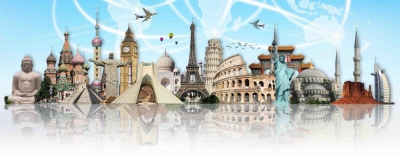
International monuments day or world heritage day is celebrated every year on April 18. The day is observed to spread awareness about the dying culture and natural heritages. The International Day for Monuments was proposed by the International Council on Monuments and Sites (ICOMOS) on 18 April 1982 and approved by the General Assembly of UNESCO in 1983.
What are monuments?
Monuments are old constructions that were created to honour a person or event. These could be anything from pillars and statues to forts and palaces. In fact, many ancient places of worship are considered monuments too. Heritage refers to the several aspects that are tied deeply to a culture, region, group, or even a nation. These aspects include traditions, beliefs, buildings, rituals, etc. Some of these are intangible. meaning they are not “physical” entities. A few examples of intangible heritage are knowledge, customs, values, oral folklore, languages, etc. The tangible ones are those that can be seen, and these include structures, memorials, artefacts such as paintings and sculptures, objects, etc. So, monuments are part of heritage, and are tangible.
Why are they important?
The importance of heritage and monuments cannot be stressed enough. For one, they are great teachers, holding a mirror to our hoary past. They take us through the times of our ancestors – informing us about how they lived and what they did. In fact, they can be described as immovable history books, giving us glimpses of a world that was centuries or decades ago. And, in the process, help us see how different or similar we are. We can understand their native wisdom and use it today, or learn from their mistakes so we never repeat them, and both can educate us to make this world better.
How can you help?
• Educate yourself: With the help of elders, do a thorough research about the monuments in your vicinity. Pick one and find out everything you can about it when and why it was built, who it was built by, how it is now, who maintains it, if it houses any precious artefacts, books written about it, etc. The explorations are simply limitless!
• Talk to people: Once you have discovered a monument, have discussions with like-minded people from your family, neighbours, and friends. Even better if it’s a local historian. They are likely to share new insights with you. The result? The joy of learning!
• Make a visit: Nothing can match the thrill of visiting a place you’ve been reading up on or talking about to others. Imagine spotting engravings that offer a priceless peek into society from the 18th Century? In a language you’re vaguely familiar with? Some sort of Da Vinci Code in your own backyard, won’t you say?
• Be respectful: The urge to vehemently carve one’s name on the wall of an ancient monument or deface it some other way is perhaps not uncommon. But the one good thing to learn from history is that we evolve to become better. And that alone should be a reason to never damage structures that are a living proof of our valuable past.
Picture Credit : Google




